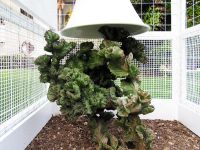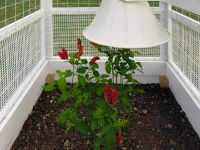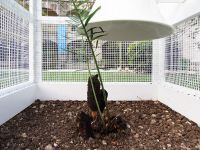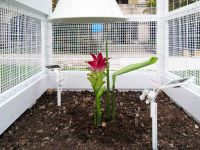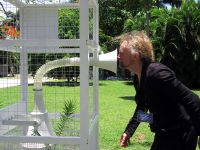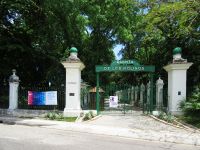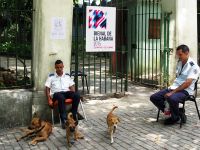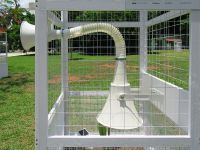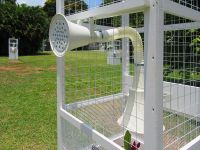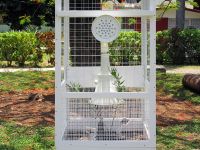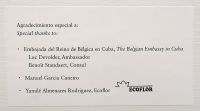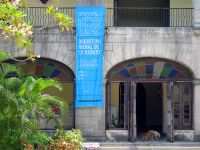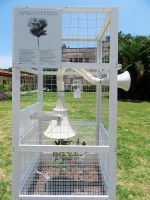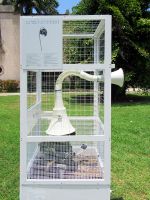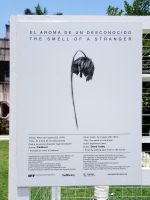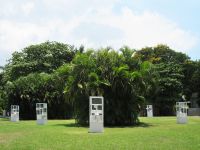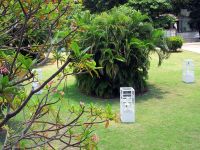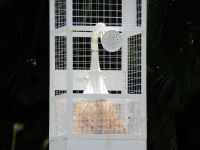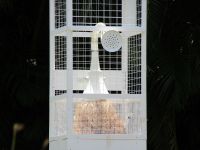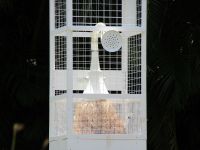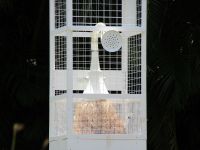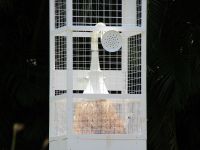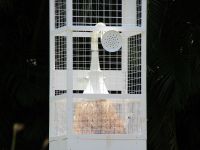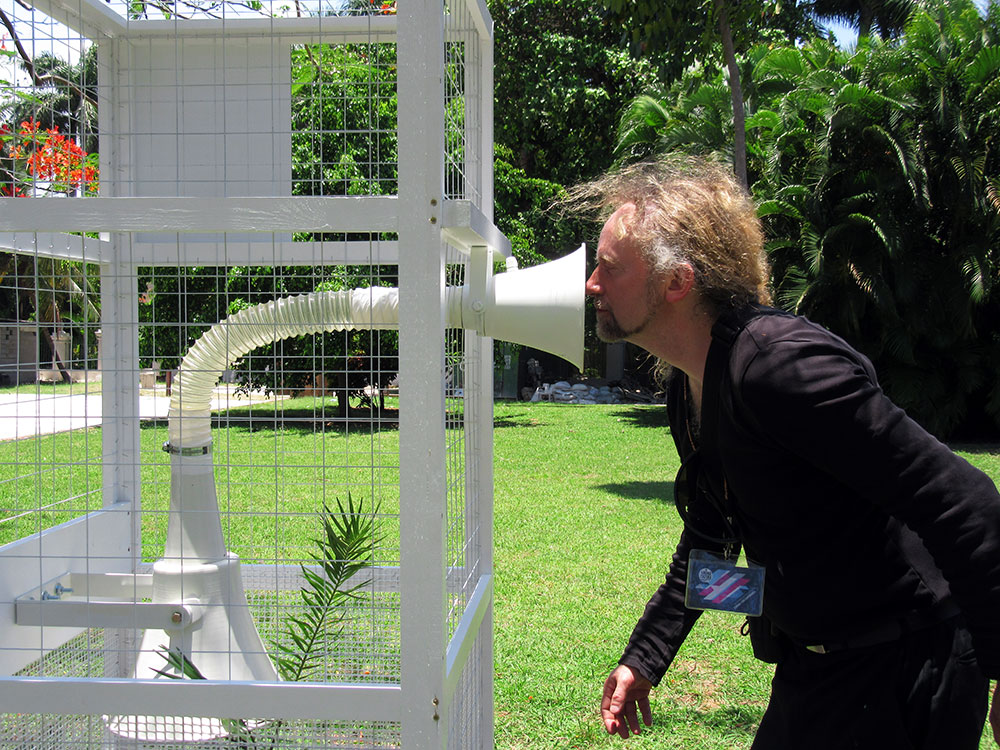 Biennial of Havana, 2015
Biennial of Havana, 2015
Art director and main curator: JORGE FERNÁNDEZ
Curator : SARA ALONZO GOMEZ
Project by Peter de Cupere: THE SMELL OF A STRANGER
22.05.2015 - 22.06.2015
‘The Smell of a Stranger’ by Peter de Cupere
… plants that smell like sperm, sweat, dead and money, …
For the 12th Biennial of Havana, the Belgian artist Peter de Cupere created the work ‘The Smell of a Stranger’. This could well be the most discussed work of the biennial of Havana. ‘The Smell of a Stranger’ is olfactory work, but also an ultra innovative technological research about the future of our planet and a small jest towards the opening of the Cuban borders towards the United States.
Through ‘Scent Engineering’ the artist changes the scent of local Cuban plants and flowers. In total he will give 9 plants, flowers a different smell through ‘scent engineering’!
It is only a few years that ‘scent engineering’ exists and it is still in full development, but imagine that one could give each plant a different scent aroma and thus increase the production of a certain scent or aroma and make it smell and taste more intense. One could give rare scents to a common plant, but also to the fruits of this plant.
Imagine that you can give the scent of French jasmine to a pumpkin, the price of this as most expensive flower scent will decrease thanks to the larger volume a pumpkin can produce. Combine this with making the scent even stronger and one no longer talks about French Jasmine as the most expensive flower scent.
Besides the many possible advantages, there could also be many disadvantages because genetic manipulation of plants are not free from consequences on nature and society. How will the insects be able to fertilize the plants through pollen? One could also just add those scents that attract or repel certain insects, bees. Or can one just take away the scent to prevent allergic reactions so that people with an allergy for a rose or lilies, can enjoy the beauty of these flowers without walking around in tears.
The artist chose especially this work to present in Cuba because Cuba still has a beautiful immaculate wildlife. Two years ago, he went together with Curator Sara Alonso Gómez, Bruno Devos and an aroma specialist of the Cuban army on a scouting trip into the forest to discover new scents. The artist was surprised by Cuba’s wonderful and immaculate nature and exactly that is why he wants to make a statement with the work ‘The Smell of a Stranger’ to make the Cubans think about their future now that the borders with the United States have opened up. The Western culture is slowly creeping in and the capital automatically follows. Cuba has a lot of nature and a lot of cultural aspects which can be exploited with bad intents. Two years ago, the artist did not yet see any brands such as Coca-Cola or M&M’s on the shelves in the shops in Havana. Two months ago, when being out there on prospection for the work, these were shining on the shelves of the shops due to the Cuban sun rays which fell on it. Will Cuba maintain its cultural and natural identity?
Artist Peter de Cupere takes it even a notch further than only foreseeing the plants of a scent of a different plant. He ‘scent engineers’ the plants with a scent referencing to human beings. A plant will smell like sperm, another one like a vagina, another one like the scent of cold sweat and yet many other scents such as the scent of money. But also the scent of gun powder and air pollution are present and also the funny reference to our Western culture with the scent of hamburgers. Because the artist says that once you know how to engineer a scent, you can create almost any scent you want. According to him will future perfumes not only be created in laboratories, but also through plants.
Imagine that you can let your own scent develop in a flower! But also non-living scents such as the scent of death is present in a plant. The artist makes a reference to the future where one will be able to make plants who lets the scent of a loved one survive so that you can have the person olfactorically with you at all times. Just about the scent combinations with plants and flowers will the art philosophers have a lot to write about. And to reinforce the progressive character of his work, there is one plant which creates the scent of blood. He hopes to show by this that one could have plants create blood so that there would always be sufficient to help people in need.
The Smell of a Stranger lets you, as a spectator, think about what if gene technology and scent engineering become common good. What could the consequences be? Advantages and disadvantages?
Because Scent Engineering is not yet developed very far and one does not yet know whether or not bringing it in contact with the skin is harmful, the plants are in a planter with bars so that the visitors cannot touch the plants. The scents of the plants are reinforced by small fans and a large scent spreader. These work on solar energy and there is no lack of sun in Cuba! Furthermore, the plants have been manipulated in such a manner that the scents smell very concentrated. The scents are kept in the scent spreader through a sponge-like structure which has been created to hold onto the scent. The visitor can thus experience the scents at any time during the day without the scent being any less at a certain moment of day. Only after a while the intensity of the scent will decrease. Because it is currently impossible to keep plants, on which scent engineering has taken place, alive for a long time, the scent will decrease over time. Thus the plants will smell more intense at the start of biennial than at the end of it. This is something that needs to be improved in the future.
Supported by
- Bruno Devos, director at Stockmans Printing, BE, www.stockmans.be
- Supported by Flanders State of the Art, Belgium
- Fragrances supported by IFF Research lab Bernardo Fleming and his team of expert fragrance designers (olfactive design) Meabh Mc Curtin, Gregoire Hausson, Christian Alori
- Plants supported by Ecoflor, Havana, CU

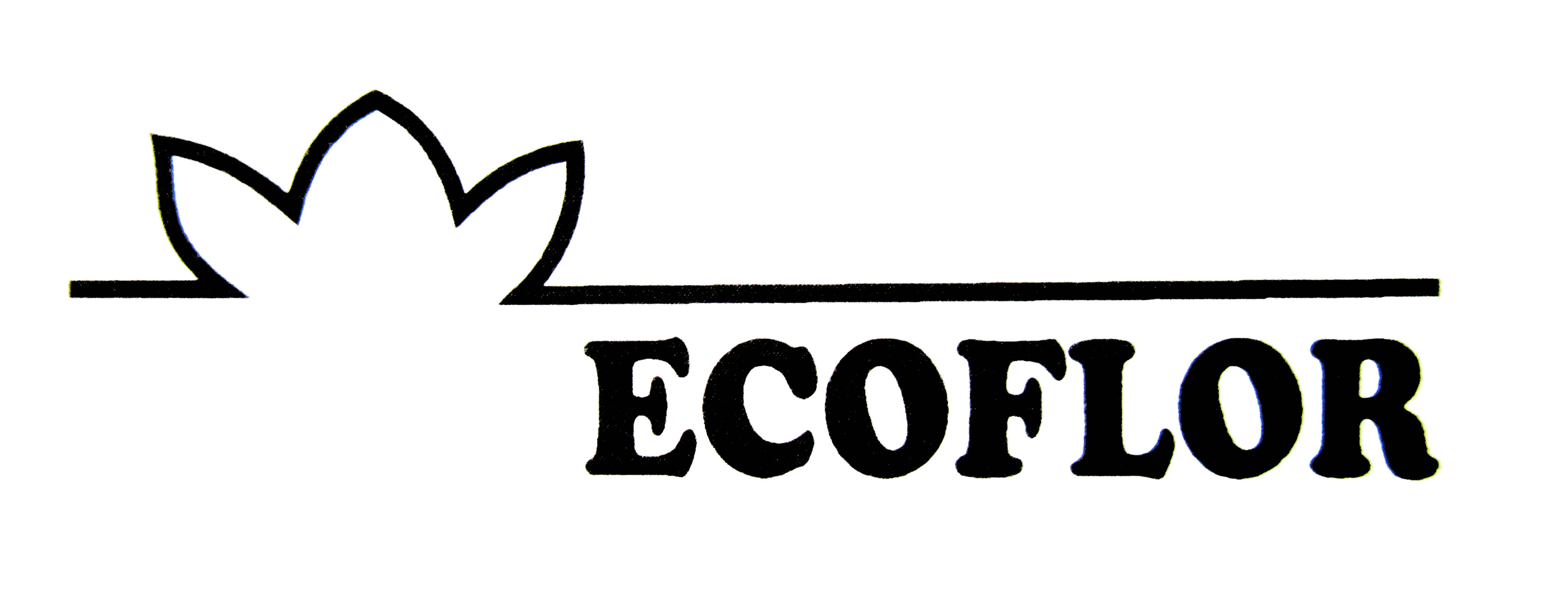
![]()
| Next > |
|---|
